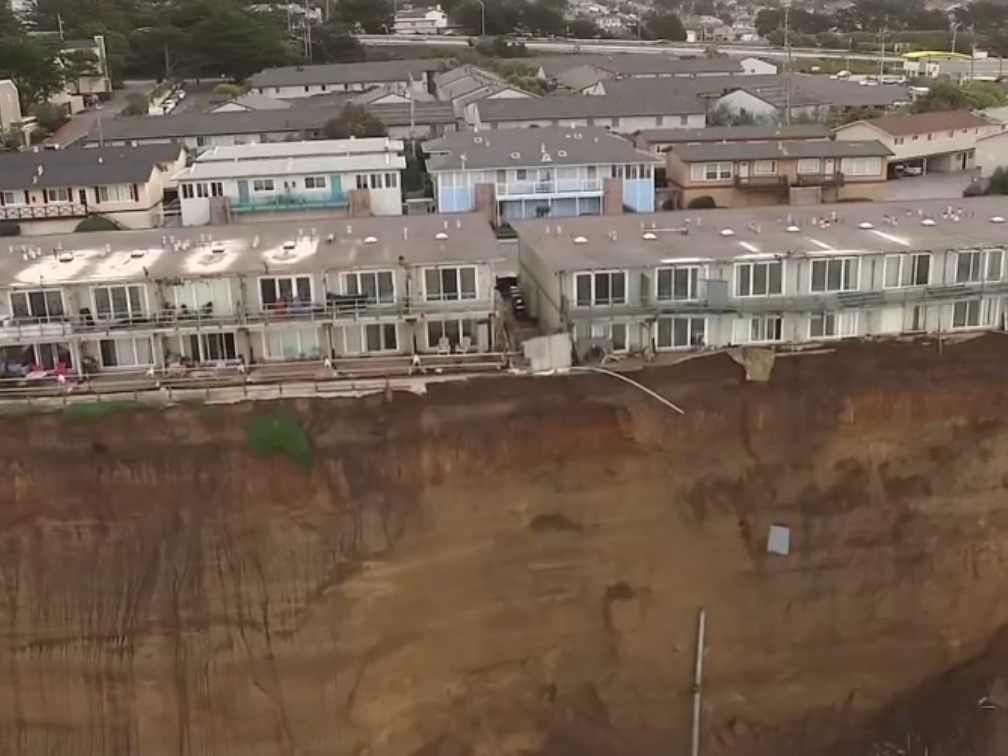Pacifica: Part of California city on verge of falling into the sea due to El Nino storms
Many houses along the Californian coast are on the verge of collapsing into the sea
Your support helps us to tell the story
From reproductive rights to climate change to Big Tech, The Independent is on the ground when the story is developing. Whether it's investigating the financials of Elon Musk's pro-Trump PAC or producing our latest documentary, 'The A Word', which shines a light on the American women fighting for reproductive rights, we know how important it is to parse out the facts from the messaging.
At such a critical moment in US history, we need reporters on the ground. Your donation allows us to keep sending journalists to speak to both sides of the story.
The Independent is trusted by Americans across the entire political spectrum. And unlike many other quality news outlets, we choose not to lock Americans out of our reporting and analysis with paywalls. We believe quality journalism should be available to everyone, paid for by those who can afford it.
Your support makes all the difference.While bringing the rest of California relief from its extended period of drought, El Nino is causing serious damage to the city of Pacifica.
As seen in the video above, many houses are on the verge of falling into the sea. The steady erosion of Pacifica's coastline is being accelerated by El Nino, thanks to its heavy storms and high tides.
Three apartment complexes on the shoreline that are still occupied have been declared uninhabitable and will require demolishing.
Pacifica’s city manager has declared a state of emergency in the coastal city.
Resident Lawrence Spies told Al Jazeera that although the coastline had already experienced significant erosion, its pace had suddenly quickened.

“Since this new storm system that everybody’s named El Nino, it has gone at a very rapid pace, faster than ever before,” said Mr Spies.
“We used to have 140 feet beyond the end of the building and that was in 1975 when we moved in here and now we got 15 feet left.”
He also explained that the extended drought is the cause of the current problems.
“It’s so dried up that these rains are just saturating it and then the high tide comes in and washes the bottom portion of it out and it just fall down on top of itself.
El Nino occurs every two to seven years along the Pacific coast. Usually, equatorial currents and trade winds move warm waters westwards, however, with El Nino, currents across the Pacific switch, sending warm waters eastwards. This drags precipitation eastwards too, resulting in droughts in some countries and heavy rains in others.

Join our commenting forum
Join thought-provoking conversations, follow other Independent readers and see their replies
Comments